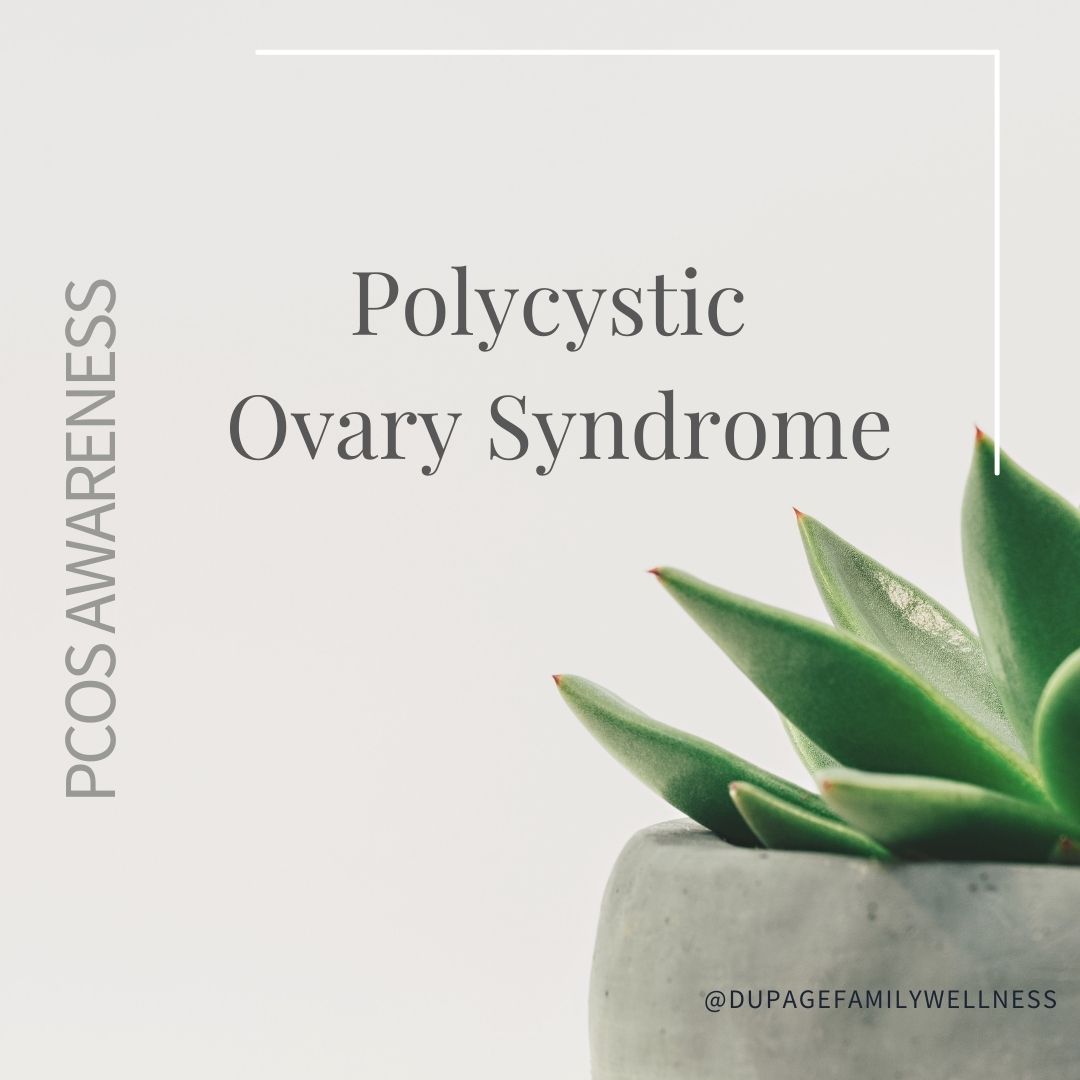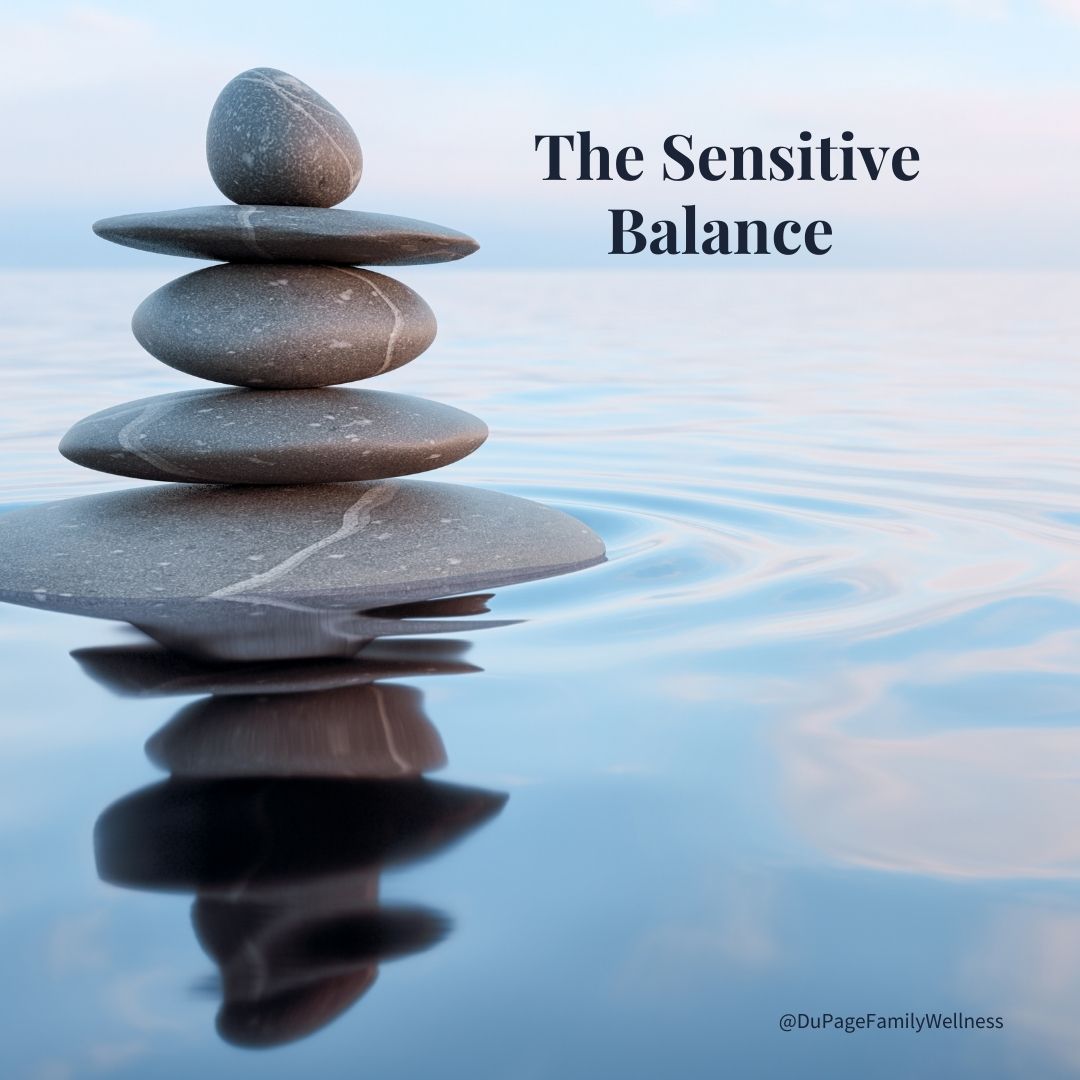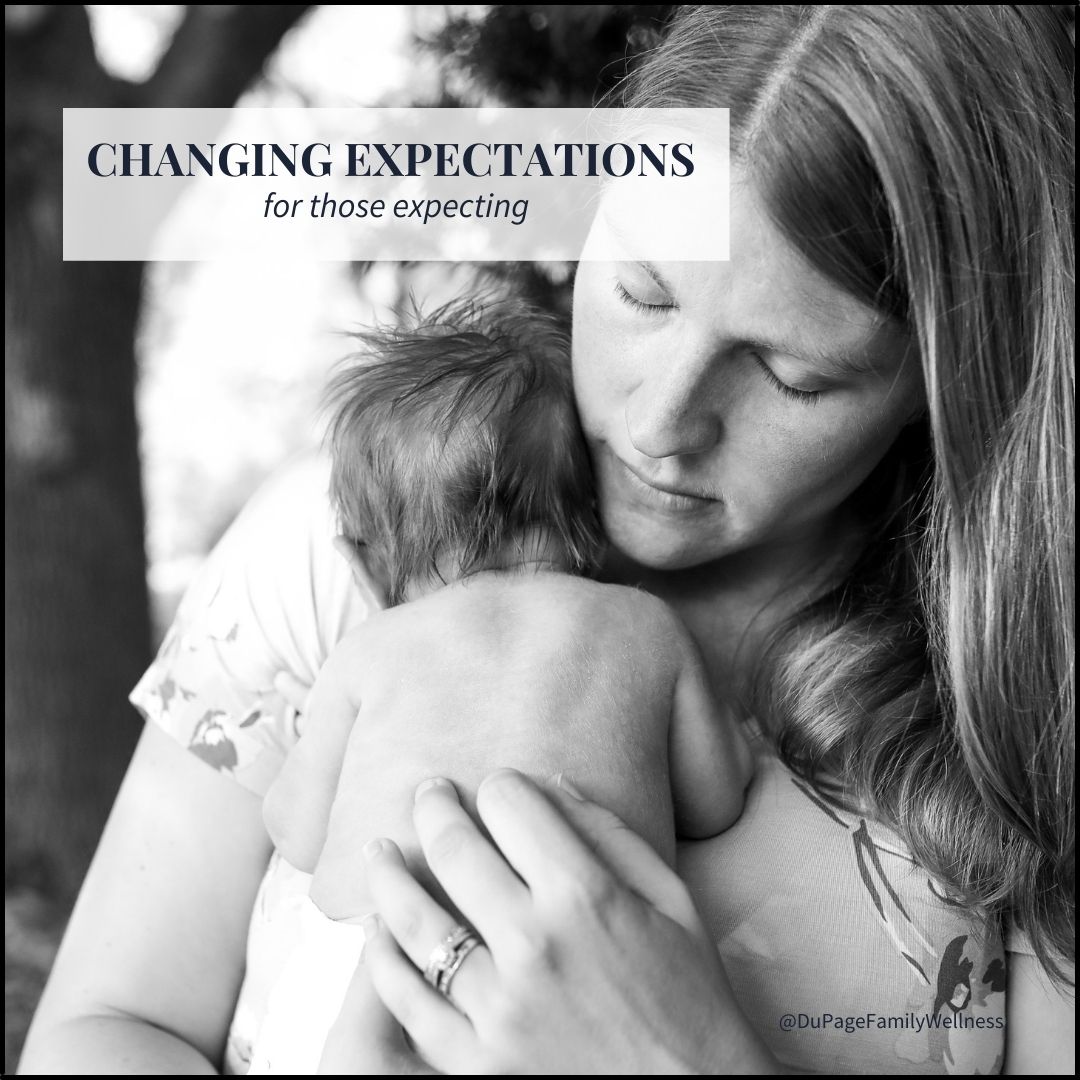 Polycystic Ovary Syndrome (PCOS) is a hormonal disorder that affects as many as 5-7 million women of reproductive age in the US alone. This is 10% of all reproductive-aged women! Over half of these remain undiagnosed. With that many women affected it seems like this disorder should be well known and understood!
Polycystic Ovary Syndrome (PCOS) is a hormonal disorder that affects as many as 5-7 million women of reproductive age in the US alone. This is 10% of all reproductive-aged women! Over half of these remain undiagnosed. With that many women affected it seems like this disorder should be well known and understood!
Unfortunately, many people have never heard of PCOS, and women often go undiagnosed each year. To combat this the National Polycystic Ovary Syndrome Association developed World PCOS Day of Unity and declared September PCOS Awareness Month.
If you follow us on social media, you will notice that the whole month of September will be devoted to PCOS awareness month. Our goal is to reach as many of these women as possible and to let them know that when they get to the root cause of their hormones, they can actually reverse many or all of their symptoms.
Even if you don't think that this is you, I encourage you to learn about it.... because I'd be willing to bet that you know at least 1 woman who is suffering from these symptoms without any idea that there are simple changes she can make to help!
What is PCOS?
According to Mayo clinic, PCOS is a “hormonal disorder common among women of reproductive age. Women with PCOS may have infrequent or prolonged menstrual periods or excess male hormone (androgen) levels.”
The androgen hormones can also cause weight gain (especially around the middle), acne, hair loss (on the head), as well as excessive hair growth on the face and body. The high androgen levels also make the ovaries develop numerous small follicles which fail to regularly release eggs. This is why PCOS is one of the leading causes of infertility! Women with PCOS can have just 1, or several of the above symptoms.
Does this sound familiar, but you are past your childbearing years? According to the Center for Disease Control (CDC), “This lifelong health condition continues far beyond the child-bearing years.”
Read more ...
 In our fast paced society, many of us have lost the ability to simply be present in our bodies. We go through our days following our schedules, and to-do-lists, never really noticing what is going on inside.
In our fast paced society, many of us have lost the ability to simply be present in our bodies. We go through our days following our schedules, and to-do-lists, never really noticing what is going on inside.
From an early age many of us have unintentionally been taught to ignore our body’s sensations. While it can be convenient to disregard these sensations at times, if we consistently disregard what our body is telling us, there may be a price to pay!
Let’s look at this issue and reevaluate the importance of listening to our bodies!
How We Learn to Ignore Our Bodies
Most of us have been taught, in subtle ways, to ignore our body since we were very young. These messages were often given by well intentioned adults over the course of our lives. Some examples of these messages include:
- Having to wait until mealtimes to eat.
- Being required to clean your plate.
- Waiting to go to the bathroom until between classes.
- Being taught to hold back when you have to pass gas or burp.
- Having our feelings minimized, dismissed, or punished.
- Being pushed to keep going when we were tired and needed to rest.
Not all of these lessons are bad. Sometimes we cannot satisfy our bodily needs immediately, however it can be damaging when we learn to ignore them all the time.
What About Learning Self Control?
We all realize that we can’t act on our bodily sensations all the time. If you are in an important meeting it would be inappropriate to grab a snack, go to the bathroom, or loudly burp. But what if there is a way to honor both the body and social norms.
Ideally, we would recognize the messages that our body sends and then choose how to act on them. We don’t need to follow these sensations impulsively, but it is important to recognize them and consciously choose our response.
Read more ...
 Have you been enjoying a glass of wine in the evening? Do you enjoy a cocktail with your friends on occasion?
Have you been enjoying a glass of wine in the evening? Do you enjoy a cocktail with your friends on occasion?
Many of us have come to rely on a drink to help us wind down or have fun with friends. And while there is nothing wrong with an occasional drink, it is important to understand the effects it has on the body, especially in regards to our hormones.
What Are Hormones?
Hormones are chemical messengers within the body that are secreted by glands in the endocrine system. These messengers tell the tissue and organs in the body what to do. The proper balance of hormones is crucial for both physical and mental health.
When something happens to make one hormone increase the other hormones are affected. It's like a delicate dance with some hormones following another's lead.
Alcohol and Hormones?
Alcohol is thought to have a complicated relationship with the balance of hormones within the body. Let’s take a look at some of the ways moderate alcohol impacts this system.
- Estrogen - Alcohol has been found to raise the level of estrogen in the body. There are a few ways that this may happen, but let’s take a look at one of the mechanisms in which this happens. Both alcohol and estrogen are processed in the liver. When the liver is busy handling alcohol, it prevents the liver from detoxing estrogen as efficiently. This results in a buildup of estrogen in the system.
Read more ...
 Everyone wants to be healthy, but there is so much conflicting information about how to achieve true health. We know that eating well is a huge part, but what exactly does it mean to eat healthily?
Everyone wants to be healthy, but there is so much conflicting information about how to achieve true health. We know that eating well is a huge part, but what exactly does it mean to eat healthily?
Many people claim that vegetarian or vegan diets are the way to go. But is giving up meat really the healthiest way to live? While everyone’s body is different, there are some general things to consider when evaluating these diets.
Let’s take a look to consider the concerns and see if they truly are all they claim to be.
The Basics
Let’s first define what we mean by a vegetarian or vegan diet. Most people know that being vegetarian means that you don’t eat meat, while vegans don’t eat any animal products at all (no honey, eggs, milk, cheese, etc.).
It is important to note that not all vegetarian/vegan foods are healthy. Just think about soft drinks, Oreos, potato chips, and candy. Many of them are free from animal products, but would not be considered healthy.
Meat Alternatives
Since vegan and vegetarians don’t eat meat, there is a big market for meat alternatives. In fact, in 2018 alone the plant-based industry brought in $3.3 billion. That’s a lot of money!
You can find just about any plant-based meat alternatives (chicken strips, hamburgers, bacon, breakfast sausage, etc.). But are these “meats'' really healthy alternatives? Well, unfortunately, these products contain a lot of questionable ingredients. This is why is it so important to always read your ingredient labels to make sure that most of what you are putting into your body are simple, real food ingredients.
Read more ...
 Pregnant moms get all sorts of questions. Is this your first? When are you due? Is it a boy or a girl? These questions are born out of excitement and anticipation, but some of these questions are not as straightforward as you may think.
Pregnant moms get all sorts of questions. Is this your first? When are you due? Is it a boy or a girl? These questions are born out of excitement and anticipation, but some of these questions are not as straightforward as you may think.
Consider the question, “When are you due?” While there may be a prescribed due date, what does that mean? Can we really predict with accuracy when the baby will be born?
There are so many factors that come into play. So, how much weight should we give these dates? And are there better methods of predicting a due date?
Let’s look at the history of how due dates are calculated and consider if our ideas about due dates are really accurate.
History
In the 1700’s, Hermann Boerhaave developed a method to calculate an estimated due date by studying the records of 100 pregnant women. He determined that adding 7 days from the last period and then adding nine months would result in an estimated due date. But Boerhaave never clarified whether this formula should use the first or last day of the woman’s period.
In the 1800’s Carl Naegele expanded Boerhaave’s thoughts, but he did not specify if the formula was based on the first or last date of the mother’s period either
For years doctors used the last day of the last period to calculate due dates. But by the 1900’s it became the standard to calculate it from the first day of the last period. Today this calculation is called “Naegele’s Rule.”
Read more ...
 Polycystic Ovary Syndrome (PCOS) is a hormonal disorder that affects as many as 5-7 million women of reproductive age in the US alone. This is 10% of all reproductive-aged women! Over half of these remain undiagnosed. With that many women affected it seems like this disorder should be well known and understood!
Polycystic Ovary Syndrome (PCOS) is a hormonal disorder that affects as many as 5-7 million women of reproductive age in the US alone. This is 10% of all reproductive-aged women! Over half of these remain undiagnosed. With that many women affected it seems like this disorder should be well known and understood!

 In our fast paced society, many of us have lost the ability to simply be present in our bodies. We go through our days following our schedules, and to-do-lists, never really noticing what is going on inside.
In our fast paced society, many of us have lost the ability to simply be present in our bodies. We go through our days following our schedules, and to-do-lists, never really noticing what is going on inside.  Have you been enjoying a glass of wine in the evening? Do you enjoy a cocktail with your friends on occasion?
Have you been enjoying a glass of wine in the evening? Do you enjoy a cocktail with your friends on occasion?  Everyone wants to be healthy, but there is so much conflicting information about how to achieve true health. We know that eating well is a huge part, but what exactly does it mean to eat healthily?
Everyone wants to be healthy, but there is so much conflicting information about how to achieve true health. We know that eating well is a huge part, but what exactly does it mean to eat healthily? Pregnant moms get all sorts of questions. Is this your first? When are you due? Is it a boy or a girl? These questions are born out of excitement and anticipation, but some of these questions are not as straightforward as you may think.
Pregnant moms get all sorts of questions. Is this your first? When are you due? Is it a boy or a girl? These questions are born out of excitement and anticipation, but some of these questions are not as straightforward as you may think.